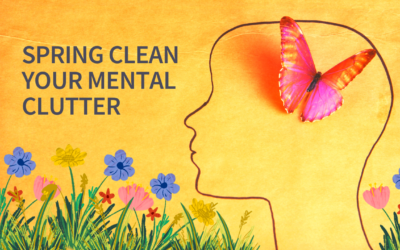My son, Max, graduates in May. I pulled out his memory bin to put together some photo boards for his graduation party (which may end up being via Zoom).
I’ve had so much fun taking a trip down memory lane, looking at his stick people drawings, 4th grade journal entries about his annoying little sister, and other special times from these last 18 years.
He took a break from gaming for half an hour or so to look through them with me. Sitting on the couch next to my handsome, grown-up little boy and laughing about the contents of the memory box was one of those moments I want to lock into my mommy memory forever.
Because I had a destination for these papers and photos, the process of reviewing them was a piece of cake.
The Memory Box
Parents often ask me how to organize their kids’ art and special memories. My answer is to share what I have done. It’s relatively easy and gets the job done.
I’m focusing specifically on papers here and not photos. Printed photos get sorted into a photo box, then tucked into the larger memory bin.
Creating a memory box for kids works best when your child is pre-school age. If you have older kids, you can still create a tidy memory bin. You will just need to do a bit more gathering and sorting.
Stage 1: Get the supplies
- Purchase a 66 qt plastic bin like this https://tinyurl.com/y76y62uf for each child.
- Create separate manila folders for each school year and include the calendar year in the title. For example, 7th grade (2020-21). Start with a folder for “Before Preschool [dates]”; “Preschool [dates]; “Kindergarten [dates],” etc. The thickest files will be primary school years. Middle School/Junior High will have fewer papers and High School folders will have even fewer items to be saved. Consider combining 9th & 10th grade and 11th & 12th grade.
Stage 2: Gather and sort
- Gather the art/memory stuff from wherever it may have been shoved.
- Put on your Sherlock Holmes hat and begin to sort the papers, photos, and miscellaneous items. I suggest using a large surface for this part.
- If you have multiple children who are older at this point, the papers have probably gotten into quite a mess. You may need to sort in two steps. Step one is to sort the bigger pile into piles by child. Step two is to sort the papers for each child by year. It may seem inefficient to do a pre-sort and then do a second sort by year. Trust me, though, it will cause your brain to cramp uncontrollably to do both steps at the same time for multiple kids. I’ve helped many Moms do this two-step process.
- Once the papers are sorted by child, then sort by year. The date may not be listed directly on the paper, so this is where you channel your inner Sherlock. My kids’ teachers used a number system for each child. In 1st grade, Max was #20. In 2nd, he was #22, etc. You can use these clues to identify the piles by grade.
- As you sort, discard papers that are not save-worthy. Forms, worksheets, announcements and stuff like that are out. Drawings, art, journal entries, “all about me” posters are keepers because they show how your precious darling has changed.
- All of this sorting acts as a funnel to get to the very best representation of their growth. Now you get to reduce it even more! Lay out all of the drawings from 1st grade on a table. Then call your child in and say, “You are so special to me. I want to save examples of your work from each grade to keep in a memory box and I need your help to know which of these are your favorites.”
Use an art museum collection as an example of how people get to enjoy the finest art pieces because the curators have been selective. Understanding how to be at peace with being selective and with letting go is an essential life skill. Please take the time to teach this to your children or they will grow up to be adults who lack these skills, and so, they hold on to everything or nothing.
Note that the question is “Which are your favorites?” and not “What can we throw away?” Leading with the “What can we throw away?” question places children and adults into fear mode. And no one makes good decisions in fear mode. Instead, lead with “Which are your favorites?” If you want, add a number to the question: “Pick your top 7 favorites that we get to keep.”
Stage 3: Put it away
- Now that you and your child have curated the best from each grade, put the papers into their respective years.
- Having this system set up allows you to take each year at a time going forward. Designate an easily accessible spot (a basket or drawer in the kitchen or mudroom) to gather your child’s papers from Fall to Winter, then sort and cull over Winter break, and place saved papers into that year’s file in the memory box (which can be located on a high shelf in the child’s closet, in a basement or attic, because you only access it twice a year). Then repeat the process from January to June’s papers.
When I created memory boxes for each of my kids, I never guessed that I would get to have that moment with my soon-to-graduate son because I had gathered these papers and photos into one, easy-to-access place.
It’s never too late to create a memory box. You may even want to create one for yourself!
May all your happy memories be shared,
Kate




